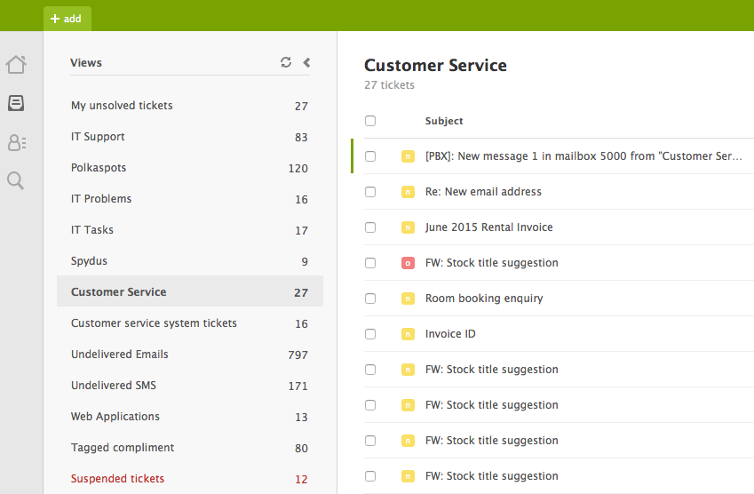We couldn’t wish for a better library service – it is superb and everybody is always so helpful and friendly.
Seven months ago we changed how we do customer service. In that time we’ve been busy rethinking problems, looking at processes and procedures and – hopefully – improving the service we offer you.
How we used to do things
In the past customers would call or email ‘Suffolk Libraries Direct’. Various library staff across the county would pick up queries throughout the week and get back to the customer once they’d read the email or taken the message.
Although individual staff did a brilliant job, digging through email inboxes and dispersing calls across libraries made it difficult to keep track of problems and conversations with customers.
Enter dedicated customer service staff – and Zendesk!
Firstly, we got rid of the ‘Suffolk Libraries Direct’ name, purely because it didn’t really describe what we do. Instead, we came up with the plain but very descriptive customer service.
We needed dedicated customer service staff and specialist customer service software to improve our service – Zendesk was set in motion!
Unlike email, Zendesk has ‘views’ that enable each user to see customer queries (‘tickets’) in a neat list, regardless of how many comments have passed between the customer and any member of our team.
It also allows us to respond quickly to common queries, such as renewals, through using macros – short scripts that perform common tasks at the click of a button.
We can now easily track and monitor individual queries regardless of how complex they are. Better still, they’re dealt with really quickly – our ‘median resolution time’ (a standard customer service measure) for a problem is 1.3 hours.

Zendesk helps us organise problems!
We respond to phone calls, letters, tweets and Facebook posts. How you contact us makes no difference – your query will become a Zendesk ticket. Zendesk even monitors answerphone messages. When you leave a message for us out of office hours, Zendesk will create a ticket and embed your message in it.
Broadening customer service
Having more staff dedicated to customer service has allowed us to take on further responsibilities. When customers have problems we don’t want them to think about who they need to contact. They just need to contact one number or email address.
So we deal with all sorts of queries, including renewals, reservations, online library card applications, problems with our catalogue and eLibrary queries – any problem that might come up when a customer uses our service. If we can’t answer it straight away we’ll find out and get back, or point them in the right direction.
But the single most popular addition to our service has been our response to stock title suggestions.
Pre-Zendesk when customers asked us to stock a book we didn’t tell them our decision. Instead, we just displayed a “keep an eye on our catalogue” message. Because we get hundreds of suggestions a month, and the query goes via different parts of the service, we just weren’t able to give customers a proper reply.
Zendesk allows us to track the initial customer query, the stock unit’s decision and the customer’s response to that decision. All the customer does is fill in a website form and we’ll get back with a “yes” or “no”, normally within a few hours.
Identifying and fixing problems
By centralising all customer queries we can quickly see when the same sorts of problems come up.
Recently, we noticed a spike in queries about expiring library cards. This prompted us to rethink the current re-registration system.
We realised that no re-registration information was available on the website, so we made a form for customers to request a library card renewal. Introducing this form has been good for us and customers – information submitted via the form is quick to process, while customers can re-register their cards without calling us or going into a library.
A centralised customer service team of dedicated staff has enabled us to provide help across several platforms. Our vision for what our library’s customer service should provide has expanded, and we continue to search for new improvements we can make.
